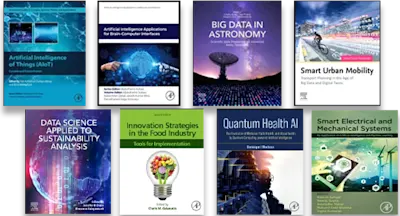AI & BIG DATA
Shaping today's innovations
Save up to 25% on AI & Big Data books, eBooks & Journals

The Sustainable Economy describes the current sustainability landscape for decision-makers in financial services. The first book of its kind, The Sustainable Economy devotes signi… Read more

AI & BIG DATA
Save up to 25% on AI & Big Data books, eBooks & Journals

Professionals in the financial services industry
Chapter 1 The sustainability agenda
1.1 Scarce resources
1.2 Fossil fuel dependence
1.3 Environmental degradation
1.4 Pollution
1.5 Climate change
1.6 Biodiversity
1.7 Global poverty and how it’s interlinked with environmental matters
Chapter 2. An introduction to Earth-friendly movements and their interactions with the financial services sector
2.1 The Permaculture movement and similar (groups dealing with methods of agriculture)
2.2 The Transition movement and the Ellen McArthur Foundation (groups dealing with the post-peak oil economy and localisation)
2.3 Friends of the Earth, WW£F, Greenpeace and similar global groups (groups focussed on the climate change, Biodioversity and environmental degradation agendas)
2.4 Oxfam and similar (groups focused on global poverty, social inequality and the links between these and environment).
2.5 Resource management, including biodiversity valuation
2.6 Developing thinking on pollution and cleanups
2.7 Measuring and constraining the flows of greenhouse gases
2.8 Energy strategy
SECTION 2 – ‘THE COMPLIANCE FRAMEWORK’
Chapter 3. International protocols for country and economic change
3.1 The UN Environment Programme and its sub-streams
3.2 The UN Convention on Biodiversity
3.3 Towards criminalising ecocide
3.4 The UN Env Programme Finance Initiative (UNEPFI)
3.5 US, EU, UK Initiatives
Chapter 4 National laws and regulations – the US, the EU, the UK
4.1 Climate and carbon emissions
4.2 Pollution
4.3 Reporting (directors’ obligations for quoted companies)
4.4 The energy industry
4.5 The aviation and transport industry
4.6 Building and infrastructure
SECTION 3 – THE PRACTICALITIES OF COMPLYING AND PROFITING
Chapter 5. Operational compliance
5.1 Establishing and implementing an environmental code of practice
5.2 Green procurement and usage practices
5.3 Recycling and waste management
5.4 Customer and staff engagement
5.5 Summary – the costs and benefits of environmentally friendly operations
Chapter 6. Products and services for the new economy
6.1 Banking - deposit raising
6.2 Lending – including mortgage protocols to reflect new building regulations
6.3 Investments including collective investment schemes
6.4 Insurance
6.5 Derivatives
6.6 Carbon markets and similar (other GHGs and pollutant markets)
Chapter 7. Financing the future – funding the necessary changes
7.1 Finance for renewables
7.2 New forms of financial product for planetary remediation
7.3The cash flows of mending the world – what’s estimated as being needed, and where it may come from.
Chapter 8 Carbon Markets
8.1 The evolution of the markets in carbon and other GHGs
8.2 Current volume, usage and trends
8.3 Carbon pricing –the economic, political and business implications
8.4 Carbon markets as investments
8.5 Where next?
Chapter 9 Some wider thinking: towards a new economic framework
9.1 What might a re-imagined economy look like and what role would financial services play?
9.2 Localism vs globalism and the economy
9.3 The work of The New Economics Foundation (NEF) and The Schumacher Foundation
CT
an Associate Lecturer in Financial Services at the Isle of Man College of Further Education.
Prior to her current position she was Head of Legal, Compliance and Risk - Global Fund Services, Bank of Bermuda (Isle of Man) Ltd. She has been in the financial services industry for 20 years. She has also held positions as Manager, Marketing and Product Development for an international financial services provider, and was a Policy Adviser to the Isle of Man Government Financial Supervision Commission specialising in the development of the regulatory framework for collective investment schemes. She is a Fellow of the Chartered Institute of Bankers, a Member of the Securities Institute, a Member of the Society of Financial Advisers and an Associate of the Life Insurance Association by Diploma.She lectures internationally on subjects including fund management, regulation and compliance, insider dealing, investor protection regimes, and mortgage lending, and is Associate Lecturer, Financial Services at the Isle of Man College of Further Education. She has been engaged by the Africa Centre for Investment Analysis to deliver a 3-day course in November 2003 covering Insider Dealing Regimes, Investor Protection Regimes and International Funds.